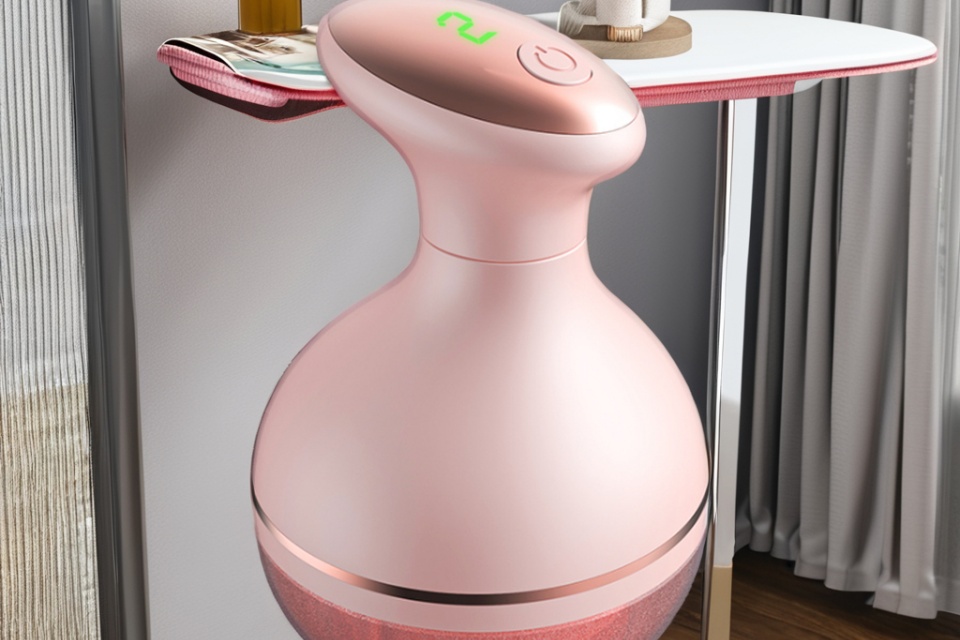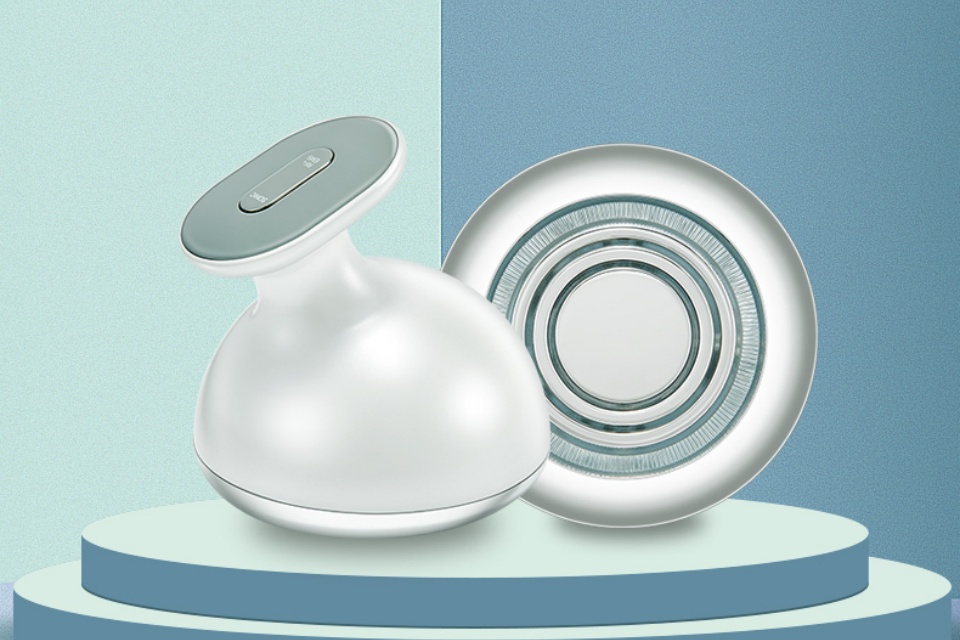Does Ems Anti Cellulite Devices Work On Cellulite?
Summary
Electrical Muscle Stimulation (EMS) devices have gained popularity as a non-invasive treatment option for reducing the appearance of cellulite, a condition characterized by dimpled skin resulting from fat deposits beneath the skin's surface. These devices work by delivering electrical impulses that mimic natural muscle contractions, potentially improving blood circulation, muscle tone, and skin firmness, thereby addressing common concerns associated with cellulite. The increasing demand for effective body contouring solutions has placed EMS devices in the spotlight, prompting both consumer interest and scientific scrutiny regarding their efficacy and safety.
Research suggests that EMS treatments can lead to noticeable improvements in skin texture and a reduction in cellulite, particularly when combined with healthy lifestyle choices, including regular exercise and a balanced diet. Clinical studies have shown positive outcomes, with participants reporting enhanced skin appearance following a series of sessions. However, while some individuals may experience significant benefits, results can vary widely based on factors such as skin type, severity of cellulite, and adherence to treatment protocols. Critics argue that a comprehensive approach—rather than reliance on EMS devices alone—is essential for optimal results.
Despite their non-invasive nature, EMS devices are not without controversy. Safety concerns have been raised regarding potential side effects, including muscle soreness and skin irritation, particularly when used excessively. Additionally, misconceptions about the permanence of results and the notion that cellulite only affects overweight individuals have contributed to a misunderstanding of the condition and its treatments. While the FDA has approved certain EMS devices for temporary improvements in cellulite appearance, experts caution that realistic expectations are crucial, as these treatments require consistent use and may not deliver dramatic changes for everyone.
As the market for cellulite treatments continues to expand, the discussion around EMS devices highlights the importance of consumer education and informed decision-making. Users are encouraged to consult with qualified practitioners to assess the suitability of EMS treatments for their individual needs, ensuring a safe and effective approach to managing cellulite concerns. The ongoing development of EMS technology may further enhance treatment options, though potential candidates should remain aware of the limitations and risks associated with these devices.
Mechanism of Action
Electrical Muscle Stimulation (EMS) devices operate by delivering mild electrical impulses through the skin to target muscles, mimicking the natural action potentials generated by the central nervous system that cause muscle contraction and relaxation. This process results in muscle contractions similar to those produced during exercise, thereby engaging muscle fibers without the need for physical exertion.
The electrical impulses from EMS devices not only stimulate muscle contractions but may also promote increased blood flow to the targeted areas, which can aid in tissue repair and enhance muscle strength. Additionally, these muscle contractions are thought to influence skin tone and firmness, addressing common concerns associated with cellulite. As the muscles contract and relax, they may contribute to tightening the skin, potentially resulting in a smoother appearance.
Moreover, the production of cytokines during the exercise-induced muscle damage (EIMD) process, such as interleukin-6 (IL-6), has been recognized for its role in intercellular communication, including between muscle and skin cells. This relationship may suggest that EMS devices can leverage similar biochemical pathways to affect skin and muscle tone positively.
Despite the promising mechanisms of EMS, it is important to note that many medical experts maintain that muscle building and effective cellulite treatment typically require a comprehensive approach that includes exercise and healthy lifestyle choices, rather than relying solely on EMS devices.
Efficacy of EMS Devices on Cellulite
Electro Muscle Stimulation (EMS) devices have emerged as a popular method for addressing cellulite, which is characterized by irregularly shaped furrows and bumps on the skin, commonly affecting areas such as the thighs and buttocks. This condition occurs due to the accumulation of fat cells and water retention, leading to a loss of skin elasticity and the development of the so-called "orange peel" appearance.
Mechanism of Action
EMS devices work by stimulating the underlying muscles through electrical impulses, which helps to firm and tone these muscles. This stimulation enhances the blood flow and oxygenation to the affected areas, potentially aiding in the drainage of excess fluids and fat, thereby contributing to a smoother skin texture. Research indicates that regular use of EMS can lead to a noticeable reduction in the appearance of cellulite, particularly in the early stages of its development.
Clinical Studies and Results
Several clinical trials have demonstrated the efficacy of EMS devices in improving the condition of cellulite. Participants undergoing EMS treatments reported enhanced skin tone and a reduction in the degree of cellulite after a series of sessions. The results of these studies often emphasize the importance of combining EMS treatments with a healthy lifestyle, including a balanced diet and regular exercise, to optimize outcomes and achieve desired results.
While EMS has shown promising results in toning the muscles beneath the skin, its effects may vary based on individual factors such as skin type, the severity of cellulite, and adherence to treatment protocols. Although EMS is regarded as a non-invasive option with minimal risk of complications, potential candidates are advised to consult with qualified practitioners to ensure the appropriateness of the treatment for their specific conditions.
Safety and Side Effects
The use of Electrical Muscle Stimulation (EMS) devices for cellulite reduction and body contouring involves several safety considerations and potential side effects. The FDA mandates that devices must prominently display warnings, contraindications, and precautions, particularly regarding their use by individuals with certain medical conditions or implanted devices, such as pacemakers. Common side effects associated with EMS treatments typically include muscle soreness, slight swelling, and temporary redness in the treated areas. These effects are generally mild and resolve within a few hours to a couple of days, resembling post-exercise sensations.
While the side effects of EMS devices are generally minimal, excessive use of cellulite massagers, whether manual or electric, can lead to more severe adverse reactions. Overuse may result in skin irritation, bruising, tissue damage, nerve compression, and aggravation of pre-existing conditions. As such, individuals are advised to use these devices in moderation and to follow safe application techniques to minimize the risk of negative outcomes.
In addition to general side effects, certain precautions should be observed prior to using EMS devices. For instance, the presence of tumors, broken skin, or other medical conditions may warrant additional scrutiny. Although the non-invasive nature of EMS treatments suggests they could theoretically be used by anyone, individual factors such as medical history and current health status should be assessed to ensure safety.
Furthermore, while many patients report positive outcomes from EMS treatments, ongoing education regarding potential risks and side effects is essential. Comprehensive consultation with certified practitioners can help tailor the treatment to individual needs and enhance overall safety. In 2024, advancements in EMS technology are expected to further improve the safety profile of these treatments, minimizing potential risks and enhancing patient experiences. Thus, individuals considering EMS for cellulite reduction should approach the procedure with adequate knowledge, realistic expectations, and thorough consultation to ensure safe and effective use.
User Experience and Testimonials
User experiences and testimonials play a crucial role in assessing the effectiveness of EMS (electromuscular stimulation) devices for cellulite reduction. Many individuals have reported positive outcomes, highlighting improvements in skin texture and a reduction in the appearance of cellulite after undergoing Emsculpt sessions. Patients often describe their experiences as painless and liken the sensation to an intense workout, contributing to a sense of satisfaction with the treatment.
Moreover, testimonials indicate that many users feel an increased level of self-confidence following their treatments, as they can enjoy a firmer and smoother appearance of their skin without the need for invasive procedures or significant downtime. Such reports suggest that the non-invasive nature of Emsculpt is particularly appealing to those seeking effective and quick solutions to cellulite concerns.
However, it is important to note that individual results can vary based on personal factors such as skin conditions, diet, and lifestyle choices. Users emphasize the importance of setting realistic expectations and undergoing personalized treatment plans to achieve the best results. Some feedback has indicated that while many users are satisfied, not everyone experiences dramatic changes, underscoring the need for patience and consistency in the approach to cellulite treatment.
In addition to individual testimonials, clinics often showcase before-and-after photos that further substantiate the positive outcomes associated with Emsculpt treatments. These visual representations bolster patient confidence and interest in the technology as an effective method for combating cellulite. Overall, the consensus among users reflects a generally favorable reception towards Emsculpt, although it is essential for prospective patients to conduct thorough consultations and consider their unique circumstances before committing to treatment.
Common Misconceptions and Concerns
Many misconceptions surround the use of anti-cellulite devices, particularly concerning their effectiveness and the nature of cellulite itself. A significant misunderstanding is that these devices can provide a permanent solution to cellulite. The FDA has only approved treatments like endermologie for "temporarily improving the appearance of cellulite," yet advertising often omits the word "temporarily," leading consumers to believe in more lasting results than are supported by evidence.
Additionally, the cosmetic industry has historically promoted specific narratives around cellulite, often linking it to women’s social progress and self-image. This is highlighted by Susan Faludi, who notes that a fear of declining profits in the beauty industry has driven exaggerated claims about cellulite treatments, particularly during the rise of second-wave feminism in the 1970s and 1980s.
Another common misconception is the belief that cellulite is solely an issue for overweight individuals. In reality, factors such as genetics, hormones, and lifestyle choices also play significant roles. Dermatologists have noted that slim and athletic women can also experience cellulite due to the differences in the structure of subcutaneous fat and connective tissue between genders.
Concerns regarding the safety and efficacy of electrical stimulation treatments have also arisen. While devices employing this technology, such as high-intensity focused electromagnetic (HIFEM) systems, are designed to be non-invasive, potential risks exist. It is important for individuals to consult with medical professionals to address any contraindications, such as pregnancy, tumors, or implanted medical devices.
Lastly, the notion that a few sessions of treatment can lead to miraculous results is misleading. Evidence suggests that substantial improvements typically require a series of treatments, with optimal results appearing weeks after sessions are completed. Consumers should approach such treatments with realistic expectations and an understanding of the necessary commitment for visible outcomes.
 English
English Español
Español Português
Português Pусский
Pусский Français
Français Deutsch
Deutsch 日本語
日本語 한국어
한국어 Italiano
Italiano عربى
عربى


